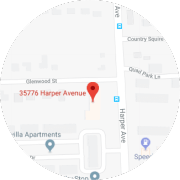
In the digital age, our eyes are constantly bombarded with blue light from computer screens, smartphones and tablets. While these devices have revolutionized the way we live, they can also lead to a condition called Computer Vision Syndrome (CVS). CVS is a group of eye and vision-related problems that result from prolonged computer use. Symptoms can include eye strain, headaches, blurred vision, dry eyes and neck and shoulder pain.
You may not be able to avoid your electronic devices, but you can do something about Computer Vision Syndrome. Here’s what you need to know to keep your eyes comfortable.
What is Computer Vision Syndrome?
CVS occurs when the eyes are forced to work harder than usual to focus on a digital screen. This can happen for a number of reasons, including:
Poor lighting:
Working in a dimly lit or brightly lit environment can strain the eyes.
Screen glare:
Glare from windows or overhead lights can reflect off the computer screen, making it difficult to see.
Improper viewing distance:
Sitting too close to or too far away from the computer screen can strain the eyes.
Poor posture:
Sitting in an uncomfortable position can put strain on the neck and shoulders, which can lead to eye strain.
Uncorrected vision problems:
If you have uncorrected vision problems, such as nearsightedness or farsightedness, you may be more likely to experience CVS.
Tips to Combat Eye Strain
There are a number of things you can do to combat eye strain and protect your vision. Here are a few tips:
- Follow the 20-20-20 rule. Every 20 minutes, look away from your computer screen and focus on something 20 feet away for at least 20 seconds. This will help to give your eyes a break.
- Adjust your lighting. Make sure your workspace is well-lit, but avoid glare from windows or overhead lights.
- Use a screen filter. A screen filter can help to reduce the amount of blue light emitted from your computer screen.
- Adjust your viewing distance. Sit about an arm’s length away from your computer screen.
- Take breaks. Get up and move around every 20-30 minutes to give your eyes and body a break.
- Use artificial tears. If your eyes are dry, you can use artificial tears to help lubricate them.
- Consider LASIK as a Solution for CVS
In many cases, LASIK surgery may be a viable solution for CVS. LASIK laser eye surgery can correct vision problems such as nearsightedness, farsightedness and astigmatism. By correcting these vision problems, LASIK can reduce the amount of strain on the eyes, which can lead to a reduction in CVS symptoms.
At Lake Lazer Eye Center, we perform two types of modern laser vision correction – SoftTouch LASIK and the SMILE procedure. It’s not uncommon for us to hear from patients who say they are more comfortable looking at their computers, tablets and smartphones following their procedure.
Computer Vision Syndrome is a common problem, but it can be managed with a few simple steps. By following the tips above, you can help to reduce your risk of CVS and protect your vision.
If you experience eye strain that does not improve with home treatment, you should see a doctor to discuss whether you’re a good candidate for LASIK. In Detroit, you can turn to Lake Lazer Eye Center for a surgeon you can trust and care close to home.
Lake Lazer Eye Center offers Detroit LASIK patients up-front pricing, and convenient and affordable payment plans for SoftTouch LASIK and the SMILE procedure. Dr. Khambati has helped thousands of people from all over the world escape the restrictions of glasses and contacts through LASIK. Detroit patients who are not candidates for vision correction can get our assistance with a contact lens evaluation or a selection of designer and specialty eyewear.

 586-792-3891
586-792-3891 



